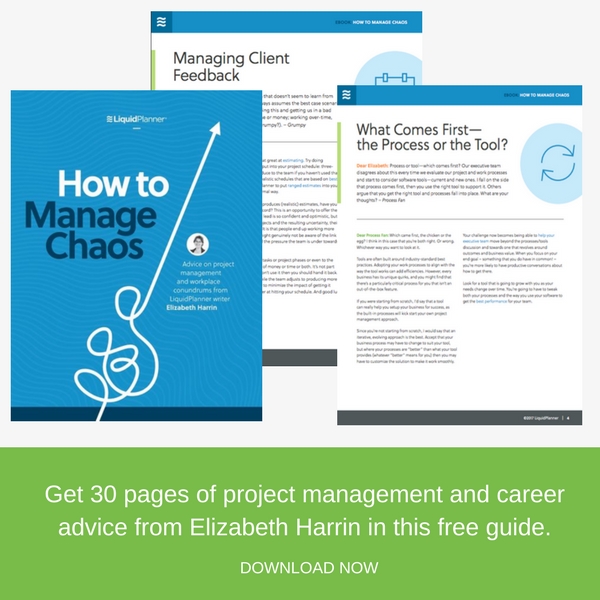It doesn’t matter what field you operate in, as soon as you bring in creative experts the potential for both personality and technical conflict increases. The why is understandable: truly creative designers and engineers who have established themselves as experts will tend to have a very strong mental model of what should happen on a project. Sometimes this vision of the future conflicts with the reality of the project scope, schedule and cost.
When this happens, it’s not a human resources issue. It’s a leadership and a project team issue that you need to resolve.
So, let’s start with why some creative-types generate so much drama in the project team. Coming from the perspective of a “creative-type”, I can understand why some skilled engineers and designers can be difficult to work with:
- Feelings of not being heard has led them to become the loudest voice in the charrette.
- They have a sense of entitlement built on a track record of success in their designs. This has now gone to their head and they let their ego run rampant.
- The individual is truly a savant who happens to have a low emotional intelligence (EI) functionality.
- They are a product of their past, with previous project managers allowing them to behave outside team norms because their technical or aesthetic designs are astounding.
Challenging Creative People Make for Better Project Deliverables
I developed my project management and leadership bona fides in an organization where you didn’t have the chance to simply drop people from the project team. It was my job to create excellence from the people presented, no matter their technical or interpersonal skills. While you may operate in an environment where you can vote challenging people off the team at the first sign of resistance, don’t.
Leadership isn’t about eliminating dissent in a team, it’s about forging a team that accepts and thrives on supportive dissent. What’s that? It is dissent intended to challenge or eliminate group-think and to ultimately lead the project team towards delivering the best quality design that meets scope, schedule, cost and quality. This isn’t going to happen in a homogeneous team where no one questions the design approach or unique risk mitigation strategies.
It’s important to have a status-quo-challenging creative person on the team. It is equally important to ensure that you set parameters, expectations and keep the creative team member on vector.
How to Lead a Creative Team Member for Team Success
In my mind, project leadership entails maximizing the effectiveness of each person on the project team. Most situations will not give you the luxury of selecting each member of the team, so you will be faced with forging an effective team with the people you’re assigned.
Even in situations where you recruit and hire specific team members or bring in outside consultants, you can miss the challenging personality trait and be faced with a challenging personnel problem.
Short of kicking the challenge off the team, let’s consider some actual leadership actions you can take to set up the creative person and entire project team for success:
Establish Expectations Early. Have a one-on-one meeting with the person to explain the norms of behavior, language, etiquette, and meeting protocols. If necessary, set up some type of sign that you give the other person when they are starting to agitate or stir the pot too much – e.g. tugging your left ear lobe or saying a phrase like “that’s interesting” while you stare directly at them.
Main point: ensure they know you will not tolerate disrespect of your project team members.
Prepare the Project Team for Personalities. If you know that a particular incoming project team member will be a personality challenge, don’t surprise the project team. For instance, let’s say you have a design or engineering consultant attending an upcoming charrette who you know to be a challenging personality.
It’s incumbent on you as the project manager to make the project team aware and to let them know why this person is being brought in. Talk about how you’ll react, as a team, to awkward situations (e.g. hot tempers or open challenges to opinions or technical ideas) so everyone is prepared.
As the project manager, visualize how you will react to these situations and at what point you’ll intervene to call a coffee break. Main point: prep the team for the personality and keep your eye on delivering a successful project.
Set a Strict Agenda in Meetings and Charrettes. If you have a full-time project team member who is a personality challenge, ensure meetings are run with a very strict agenda. This means both topical (what is discussed) and time (how long).
Don’t allow a meeting to run any longer than scheduled and if the challenging personality starts to pontificate or derail the meeting, give them the “sign” the two of you established in your one-on-one. If that doesn’t work, simply tell the person that the issue at hand will go “off-line”, meaning it will be discussed outside the current meeting. If you have a temporary team member participating in a charette, such as a consultant or individual on loan from a different division, consider having an outside facilitator run the event.
This person needs to be one with the skills for working with creative designers or engineers, and thus understands how to manage technical personalities and still deliver highly effective results.
When All Else Fails, Document. Not every situation with challenging people works out and you need to be prepared for this. That preparation starts with documenting the individual’s outbursts, inability to work collaboratively, or other instances of friction.
Be certain to highlight what the specific, negative impact is to the project in each instance. You can’t simply indicate that on “Tuesday at 3 p.m., Ted was a jerk”. Be specific and concise, while also being unemotional.
The reason you’re documenting is so that you have a record of performance you can use in private consultation with the challenging individual. If the person is part of your company, make certain that the individuals supervisor (and yours) are informed of the general situation as it develops.
Bad news isn’t like a fine wine, it doesn’t get better as it ages.
Limit Contact. Depending on your project, you may be able to limit the number of people who have to work directly with the challenging person. For instance, let’s say your project has multiple sub-components.
An outside consultant with a challenging personality is only involved in one of these sub-components and that only involves three members of your ten-person project team. Don’t expose everyone to challenging person! Limit the friction and keep the team moving forward.
When All Else Fails, Fire the Person. If, despite your best leadership efforts you can see that the project may fail because of the friction the challenging person is generating, sack them. Terminate their project team membership and ship them back to their division or terminate their contract.
If the individual is part of your company, and you have been documenting performance and sharing your concern with their supervisor, arrange a meeting with HR and their supervisor to close-out the situation. If the individual is an outside contractor, terminate the agreement with specific details on why and the negative impact on the overall project.
In the end, successful, challenging projects require subject matter experts who themselves can be challenging. Effective project managers expect that some people will bring challenging personalities into the project team and visualize how they will handle these situations. Treat this preparation just as you would treat developing risk mitigation strategies. By doing this, you will be prepared for channeling the creative energy people bring to the project while at the same time minimizing the potential for collateral damage that might derail your project.
Looking for more project management and career advice?

 Schedule a demo of LiquidPlanner with a product expert today
Schedule a demo of LiquidPlanner with a product expert today







